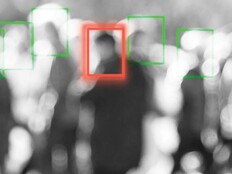How IP Cameras & Video Data Are Changing Campus Security
Video cameras have become a key part of the security strategy on college campuses, and that’s likely to stay true in years to come. Nationally, the rate of crime on campus has been falling every year since 2005, but there were still nearly 50,000 incidents in 2014 (the most recent year reported), almost half of them burglaries — a crime for which security cameras can be immensely useful in both prevention and investigation.
That was certainly the case for Central Piedmont Community College in Charlotte, N.C., which moved to IP-enabled cameras when its aging analog system began to outlive its usefulness. An implementation of 400 high-res AXIS cameras gave CPCC fixed-dome and pan/tilt/zoom capabilities, all of which could be controlled through a centralized management system. CPCC used several of the cameras to boost security at a parking garage located downtown. A payoff came quickly: When thieves stole a CPCC staff member’s car from the garage, information captured by the video cameras made it possible for police to recover her car in just one day.
Campus Security Has Begun Adopting IP Cameras
The 2016 Campus Safety Video Surveillance Survey shows that cameras are here to stay. Among respondents in the higher education sector, 90 percent said that video surveillance cameras are part of their security strategy, and another 6 percent plan to deploy them in the next three years. Institutions that are already using video cameras plan to add even more in the near future.
The University of Tulsa has 640 IP-enabled cameras from AXIS that integrate seamlessly with its Ocularis video management system. That has enabled the university’s public safety staff to improve monitoring of remote areas on campus, such as parking lots, and to use analytics to send alerts for unusual activity. What’s more, Axis encoders allow older analog units to tie in to the video management system.
NorthWest Arkansas Community College recently switched to IP-enabled cameras from Milestone Systems, in part based on its easy-to-use software. Officers who need to review a portion of a record for an investigation can easily pull the video segments themselves. Such capabilities are important because campus police share the same types of responsibilities as any other public safety officer, so they need access to the same high-caliber investigative tools.
“A sworn officer is a sworn officer,” says Houston Thomas, a public safety solution architect with CDW•G who oversees large-scale integration projects for state and local law enforcement agencies. “Whether he or she patrols miles of interstate highway, a large inner city or a small university campus, police officers in this day and age requires modern technological tools to successfully fulfill their duties. Evidence-based video in the form of body-worn cameras, in-car cameras or campus-wide surveillance systems serve to aid in apprehension and convictions while providing a safeguard to an officer’s reputation.”
Video Data Creates Opportunities for Optimizing School Safety
The application of analytics to video is still emerging — according to the Campus Safety survey, 13 percent of institutions use video analytics and 12 percent are considering adding this capability — but the University of Tulsa is already looking for ways to take advantage of those capabilities. If security staff can use analytics to identify baseline activity, for example, that means IT staff can use video cameras to focus on activity that is unusual, perhaps indicating that something is amiss.
Also on the horizon is adoption of video cameras embedded in wireless access points, a two-for-one solution that can simultaneously expand coverage of both Wi-Fi coverage and security surveillance. At the EDUCAUSE conference in October, Extreme Networks debuted a new high-definition wave 2 camera AP.
In higher education, the video solutions that are used most frequently, or earmarked for likely adoption in the near future, are: • Fixed security cameras (79 percent now, 8 percent may adopt in the next three years) • Network video recorders (44 percent now, 8 percent may adopt) • Digital video recorders (42 percent now, 10 percent may adopt) • Video management software (39 percent now, 12 percent may adopt) • Body cameras for campus police (20 percent now, 15 percent may adopt) • Physical security information management (17 percent now, 10 percent may adopt)
The Campus Security survey also showed that the majority of institutions give a thumbs-up to the quality of coverage of their video surveillance systems. That’s a major improvement from the previous survey, conducted five years ago, when half of higher education respondents said they were not satisfied in those areas — one more indicator that video cameras have come into their own.
This article is part of EdTech: Focus on Higher Education’s UniversITy blog series.










